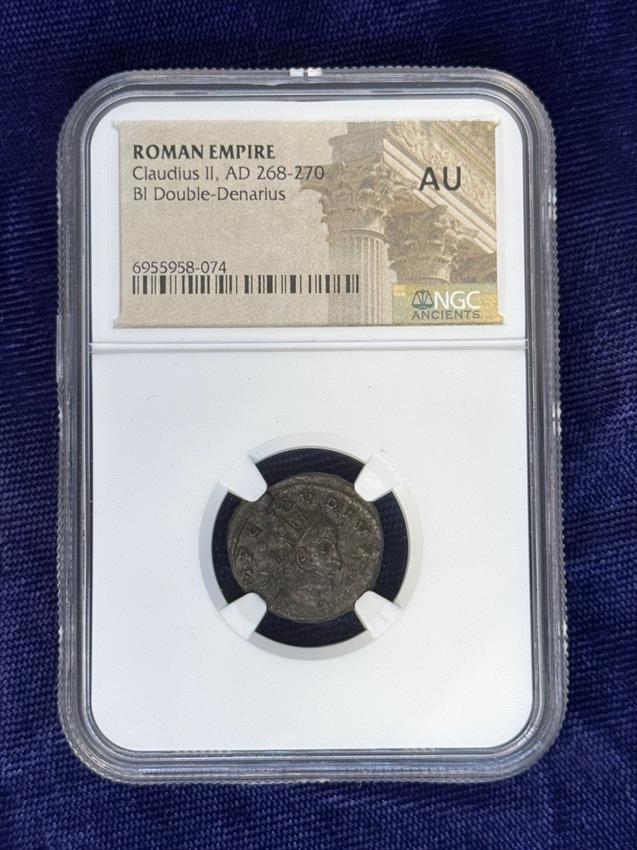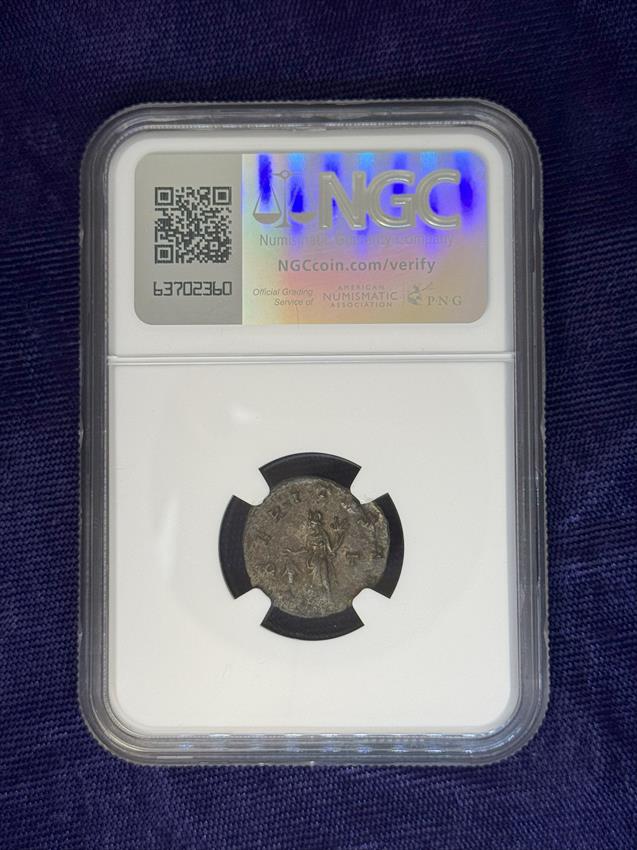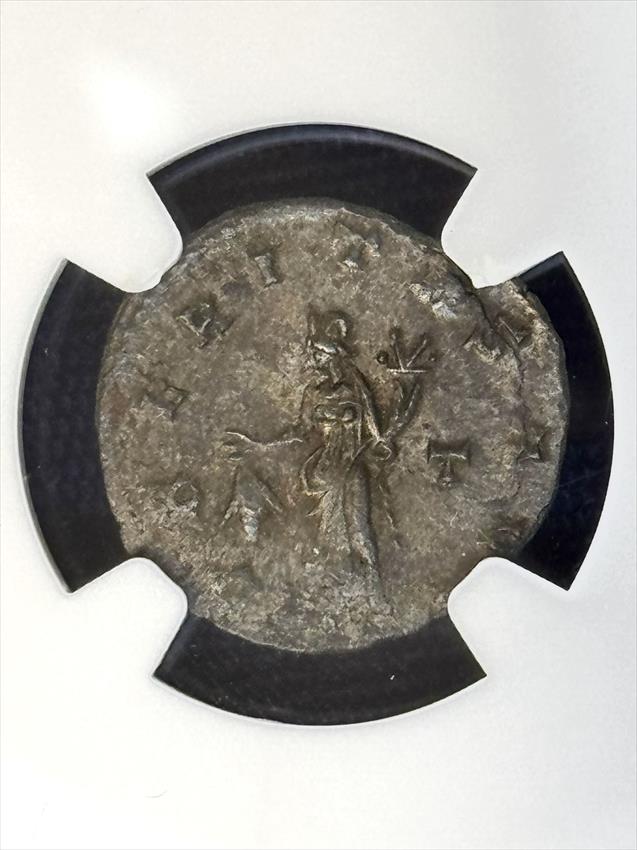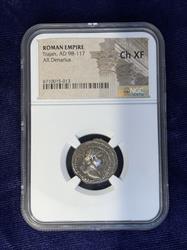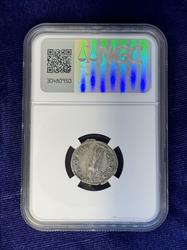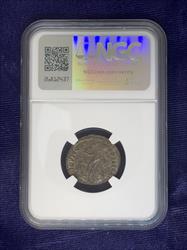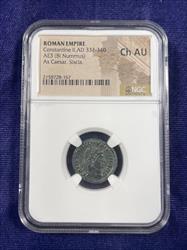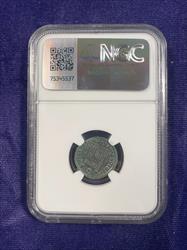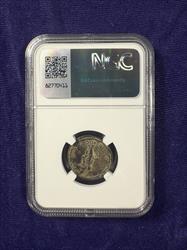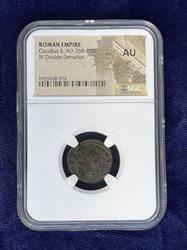
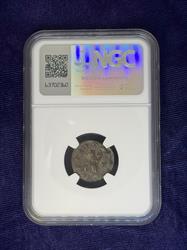
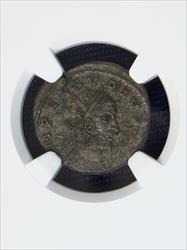
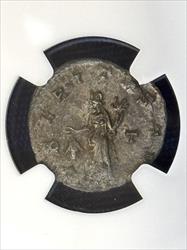
Claudius II BI Double Denarius AD 268-270 AU
$100.00
$103.25
Check/Wire
Credit Card
| Quantity | Check/Wire | Credit Card |
|---|---|---|
| 1+ | 100.00 | 103.25 |
- SKU: BFB005513
- Categories: ANCIENTS ROMAN ROMAN EMPIRE
The double denarius, sometimes called an antoninianus or aurelianianus, was a result of inflation in the Roman Empire. In 215 AD, Caracalla stopped production of the regular silver denarius and introduced the double denarius, which only used 1.5x the material of a regular denarius. In 274 AD under Aurelian, the composition of double denarii changed from a silver alloy to bronze with a silver coating. Some consider double denarii from 274 and beyond to be a different denomination (aurelianiani) than previous double denarii (antoniniani). On a double denarius’s obverse, emperors are depicted wearing a radiate crown and empresses are pictured with a crescent moon under their shoulders.
Marcus Aurelius Claudius, better known as Claudius II or Claudius Gothicus, was born in 214 AD. He was a successful officer in the army under Gallienus, the emperor before him. When Gallienus was killed in 268, Claudius’s troops proclaimed him emperor. He inherited an empire besieged by invaders and disunity, during the heart of the Crisis of the Third Century. The biggest threat was a Gothic invasion in the Balkans, which Claudius quickly addressed. His defeat of a vast Gothic army at the Battle of Naissus earned him the surname “Gothicus,” meaning conqueror of the Goths, and made him a hero in Roman oral history. He endeavored to reunify the empire, regions of which had split into the Gallic and Palmyrene Empires, but was unable to do so before he died of plague in 270. He was immediately deified by the Roman Senate. In the 4th century, decades after his death, a few allegations were made as to his family and ancestry. One was that he was an illegitimate son of Gordian II, and another was that he was related to Constantius I and therefore part of the Constantinian Dynasty. However, many historians doubt the validity of these claims.
This coin was graded AU (About Uncirculated) by the Numismatic Grading Company, the official grading service of the American Numismatic Association and the Professional Numismatists Guild. Here is a list of grades used by the NGC, as well as information about Strike, Surface, and Style ratings.
Marcus Aurelius Claudius, better known as Claudius II or Claudius Gothicus, was born in 214 AD. He was a successful officer in the army under Gallienus, the emperor before him. When Gallienus was killed in 268, Claudius’s troops proclaimed him emperor. He inherited an empire besieged by invaders and disunity, during the heart of the Crisis of the Third Century. The biggest threat was a Gothic invasion in the Balkans, which Claudius quickly addressed. His defeat of a vast Gothic army at the Battle of Naissus earned him the surname “Gothicus,” meaning conqueror of the Goths, and made him a hero in Roman oral history. He endeavored to reunify the empire, regions of which had split into the Gallic and Palmyrene Empires, but was unable to do so before he died of plague in 270. He was immediately deified by the Roman Senate. In the 4th century, decades after his death, a few allegations were made as to his family and ancestry. One was that he was an illegitimate son of Gordian II, and another was that he was related to Constantius I and therefore part of the Constantinian Dynasty. However, many historians doubt the validity of these claims.
This coin was graded AU (About Uncirculated) by the Numismatic Grading Company, the official grading service of the American Numismatic Association and the Professional Numismatists Guild. Here is a list of grades used by the NGC, as well as information about Strike, Surface, and Style ratings.
Obverse: IMP CLAVDIVS AVG, radiate and draped bust right
Reverse: VBERITAS AVG, Uberitas standing left, holding cornucopiae and what might be a cow’s udder or grapes, officina mark “T” (3) in field
Reference: RCV 11376, RIC V Claudius Gothicus 193

